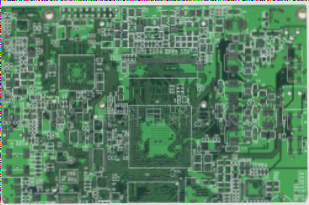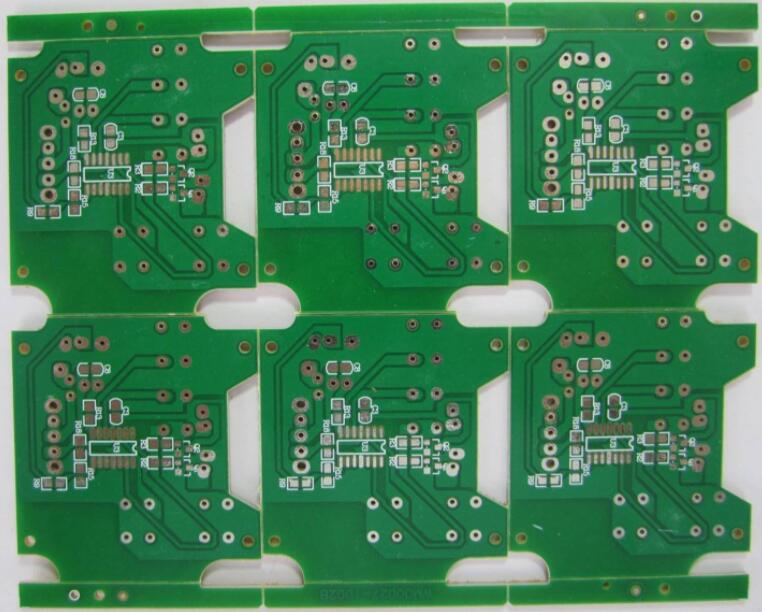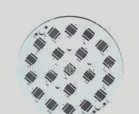In the 5G era, the PCB industry is confronted with new challenges.
1. **Material Requirements**
A clear trend for 5G PCBs is the demand for high-frequency, high-speed materials, and advanced board manufacturing. Wu Jun, Vice President of R&D at Yibo Technology, highlighted that leading material suppliers in traditional high-speed sectors, such as Lianmao, Shengyi, and Panasonic, have started developing high-frequency laminates and introducing a range of new materials. This shift is expected to challenge Rogers’ current dominance in the high-frequency laminate market. With healthy competition, material performance, ease of use, and availability will significantly improve. The localization of high-frequency materials is becoming an inevitable trend.
Regarding high-speed materials, Wu Yuanli, Purchasing Manager at Xingsen Technology, noted that 400G products will require M7N or MW4000-equivalent grade materials. In backplane design, M7N is currently the lowest-loss material option. Looking ahead, backplanes and optical modules with larger capacities will demand even lower-loss materials. A combination of resin, copper foil, and glass fabric will achieve the optimal balance between electrical performance and cost. Additionally, the increasing density and complexity of designs will introduce new challenges for reliability.
2. **PCB Design Requirements**

**3. Manufacturing Process Requirements**
The growing functionality of 5G-related applications will drive the demand for high-density PCBs, with HDI becoming an increasingly important technical field. Multi-layer HDI products and those featuring various levels of interconnection will gain widespread adoption. Additionally, new technologies, such as buried resistors and capacitors, will see more extensive application.
Furthermore, aspects such as PCB copper thickness uniformity, line width precision, interlayer alignment, interlayer dielectric thickness, back-drilling depth control, and plasma de-drilling capabilities all warrant further investigation.
**4. Equipment and Instrumentation Requirements**
High-precision equipment and pre-processing lines that minimize copper surface roughening are currently the ideal for PCB fabrication. Testing equipment should include passive intermodulation (PIM) testers, flying probe impedance testers, and loss measurement devices.
The industry recognizes that advanced graphic transfer systems and vacuum etching equipment are essential for real-time monitoring of line width and coupling distance. Additionally, electroplating equipment with uniform deposition, high-precision lamination machinery, and other specialized tools will meet the production demands of 5G PCBs.
**5. Quality Control Requirements**
With the increased signal rate in 5G applications, even slight deviations in board fabrication can significantly affect signal performance. This requires tighter control over production variances. The current mainstream PCB manufacturing processes and equipment have not kept pace with these demands, potentially becoming a bottleneck for future technological advancements. Overcoming these limitations is critical for PCB manufacturers moving forward.
If you have any PCB manufacturing needs, please do not hesitate to contact me.Contact me
1. **Material Requirements**
A clear trend for 5G PCBs is the demand for high-frequency, high-speed materials, and advanced board manufacturing. Wu Jun, Vice President of R&D at Yibo Technology, highlighted that leading material suppliers in traditional high-speed sectors, such as Lianmao, Shengyi, and Panasonic, have started developing high-frequency laminates and introducing a range of new materials. This shift is expected to challenge Rogers’ current dominance in the high-frequency laminate market. With healthy competition, material performance, ease of use, and availability will significantly improve. The localization of high-frequency materials is becoming an inevitable trend.
Regarding high-speed materials, Wu Yuanli, Purchasing Manager at Xingsen Technology, noted that 400G products will require M7N or MW4000-equivalent grade materials. In backplane design, M7N is currently the lowest-loss material option. Looking ahead, backplanes and optical modules with larger capacities will demand even lower-loss materials. A combination of resin, copper foil, and glass fabric will achieve the optimal balance between electrical performance and cost. Additionally, the increasing density and complexity of designs will introduce new challenges for reliability.
2. **PCB Design Requirements**

**3. Manufacturing Process Requirements**
The growing functionality of 5G-related applications will drive the demand for high-density PCBs, with HDI becoming an increasingly important technical field. Multi-layer HDI products and those featuring various levels of interconnection will gain widespread adoption. Additionally, new technologies, such as buried resistors and capacitors, will see more extensive application.
Furthermore, aspects such as PCB copper thickness uniformity, line width precision, interlayer alignment, interlayer dielectric thickness, back-drilling depth control, and plasma de-drilling capabilities all warrant further investigation.
**4. Equipment and Instrumentation Requirements**
High-precision equipment and pre-processing lines that minimize copper surface roughening are currently the ideal for PCB fabrication. Testing equipment should include passive intermodulation (PIM) testers, flying probe impedance testers, and loss measurement devices.
The industry recognizes that advanced graphic transfer systems and vacuum etching equipment are essential for real-time monitoring of line width and coupling distance. Additionally, electroplating equipment with uniform deposition, high-precision lamination machinery, and other specialized tools will meet the production demands of 5G PCBs.
**5. Quality Control Requirements**
With the increased signal rate in 5G applications, even slight deviations in board fabrication can significantly affect signal performance. This requires tighter control over production variances. The current mainstream PCB manufacturing processes and equipment have not kept pace with these demands, potentially becoming a bottleneck for future technological advancements. Overcoming these limitations is critical for PCB manufacturers moving forward.
If you have any PCB manufacturing needs, please do not hesitate to contact me.Contact me




